Brandi and Lindsey Jones are, to my knowledge, the only alphorn making couple in the world. They have known each other since their school days. Musically, they went the way of the trombone to the French horn as an inseparable duo. Lindsey graduated early and dedicated himself to restoring brass instruments with his Nevada-based business, Silver & Brass Musical Instruments, beginning in 2013. Brandi joined the business full time when it began generating enough sales to cover the young couple’s living expenses. It wasn’t until 2019 that the two came to the alphorn through Tony Brazelton’s Alphorn Institute. For her, the instrument is a perfect combination between her joy of hiking in the mountains and music. Since then, they have been looking for the perfect echo. The alphorn has become a professional mainstay. They are often hired for birthdays, weddings, commercial events, and Oktoberfests (for us Swiss, it takes a bit of getting used to, in the U.S., the alphorn is associated with lederhosen and dirndl). During their visit, they were even in negotiations for a permanent position in a luxury hotel. In addition, they lead the Sierra Alphorn Players, an open amateur ensemble.
They got into alphorn making because it’s hard to find decent quality alphorns in the U.S. at a reasonable price – importing and transporting horns from Europe quickly adds $1,000 to the price. The search for clever, cost-effective solutions runs like a red thread through their work. This is reflected in their construction method and further developments – such as the attempt with a square “squalphorn”. Or with the bushings, for example: they buy recycled water bottles made of steel, aluminum or bronze for them at the scrap yard. They do not mill the cups from a block but glue thin wooden rings. One challenge she faces is finding local wood suitable for alphorn making; Home Depot carries more imported wood than sound wood.
The two experimented with different designs for a long time; more than twenty prototypes were created. Now they have settled on three basic models. First, there are the horns, which they assemble from staves like wine barrels. They like to use redwood and wood in different colors (in the gallery below Lindsey’s Horn). They also make oversized alphorns in a similar design – an octave below a normal F horn. The second model is hybrid alphorns with a carbon interior and a wood veneer look. Carbon fibers were chosen after various tests because the material is very stiff – less for weight considerations. They wrap the veneer in strips around an intermediate layer. This creates an outer skin that is somewhat reminiscent of an old cattle trumpet (in the gallery below Brandis Horn). Finally, there are the horns, which they make from whole tree trunks. They cut the wood themselves in the state forest. To avoid stress cracks, they work very quickly on the still green wood. Felling, debarking, splitting, gutting and gluing back together – all done exclusively by hand – are done in a four-day window. Only then is the instrument dried slowly and carefully. The resulting alphorns – they call this “root horn” – look raw and spectacular.

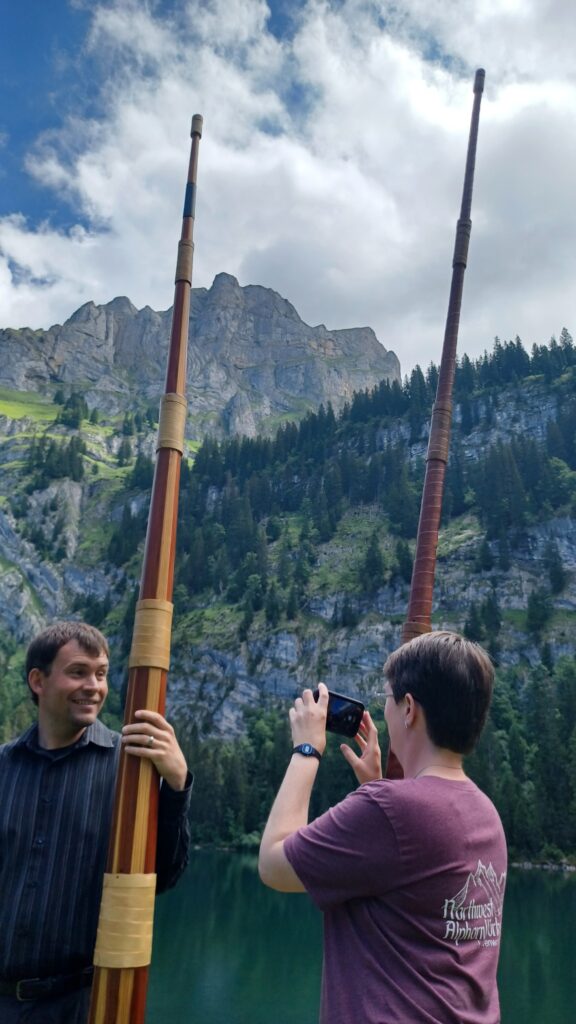
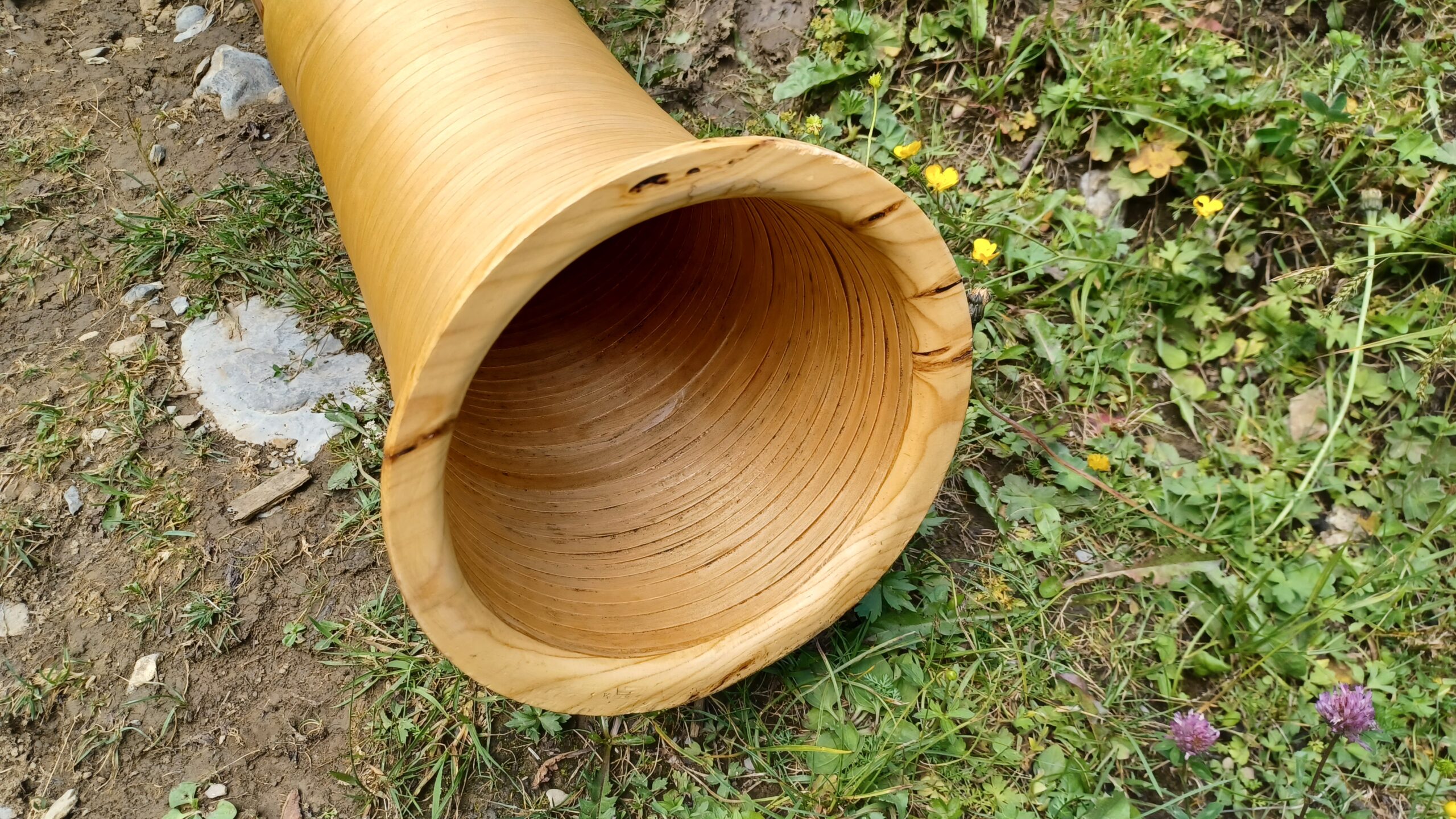
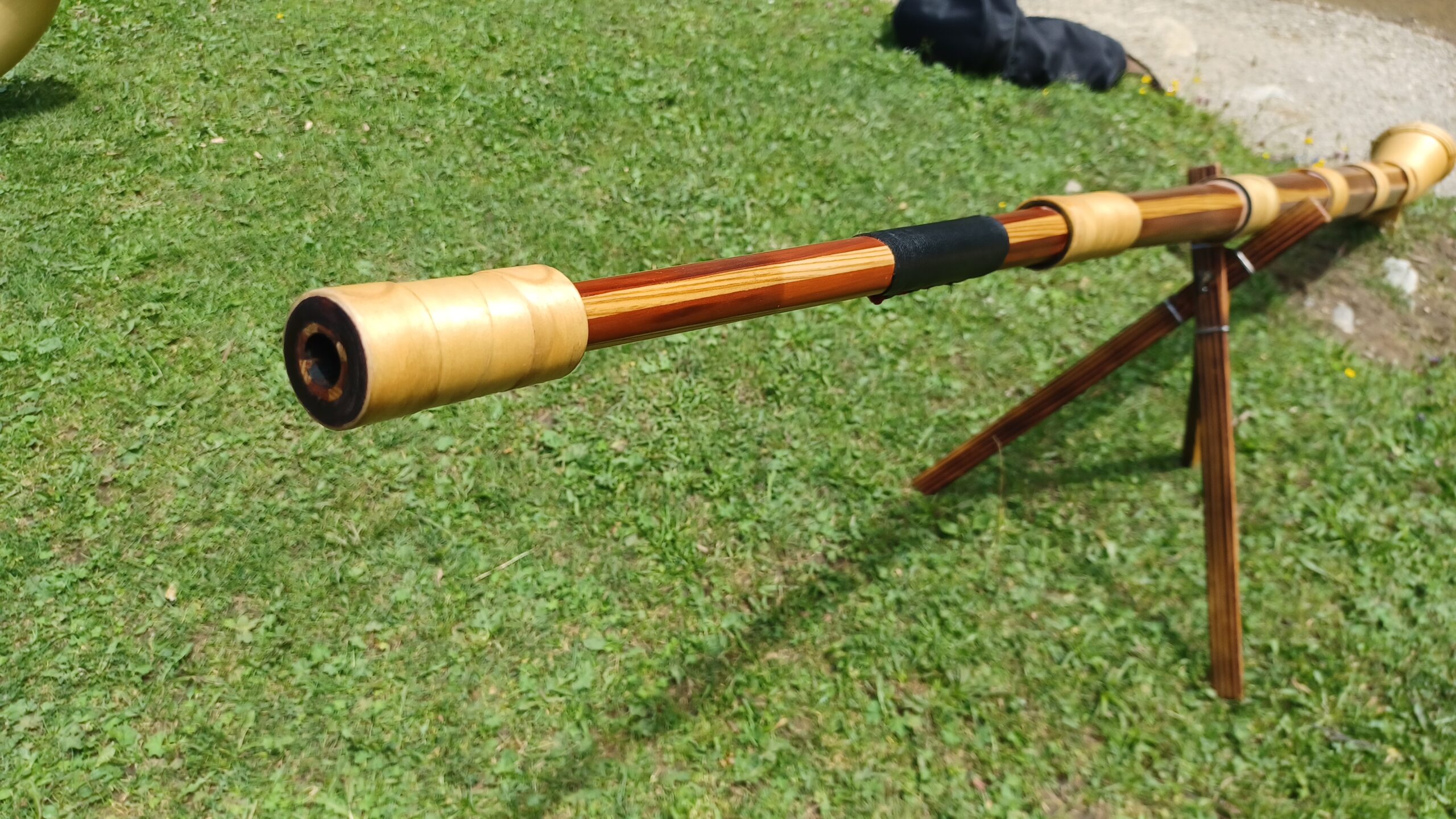
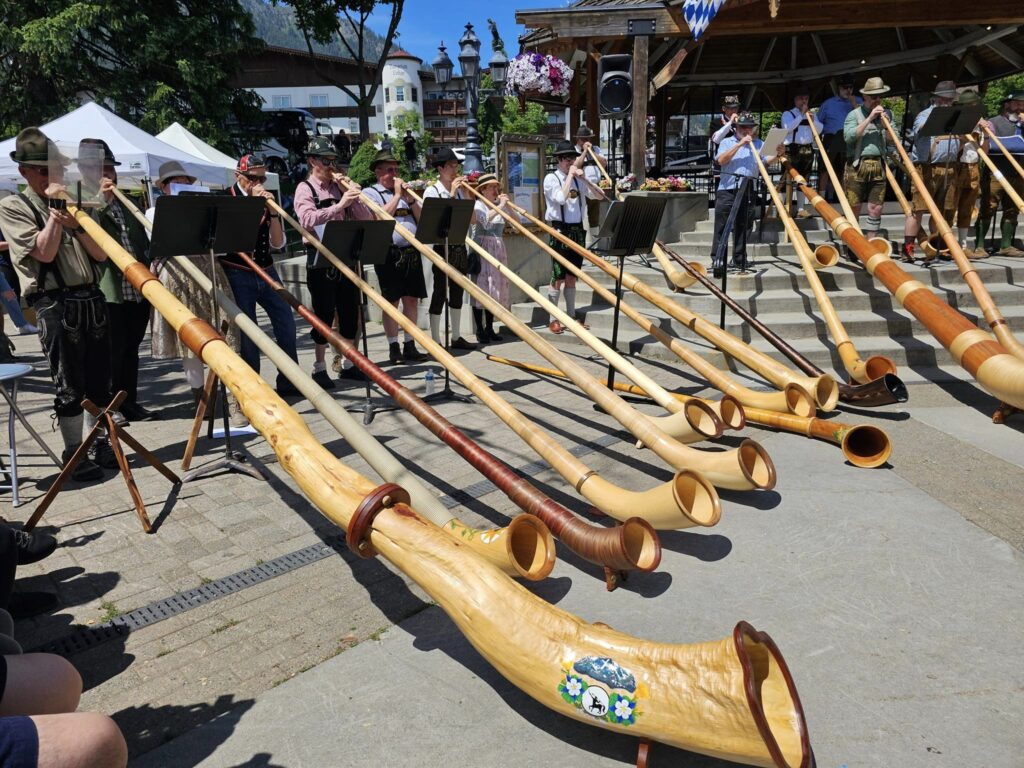
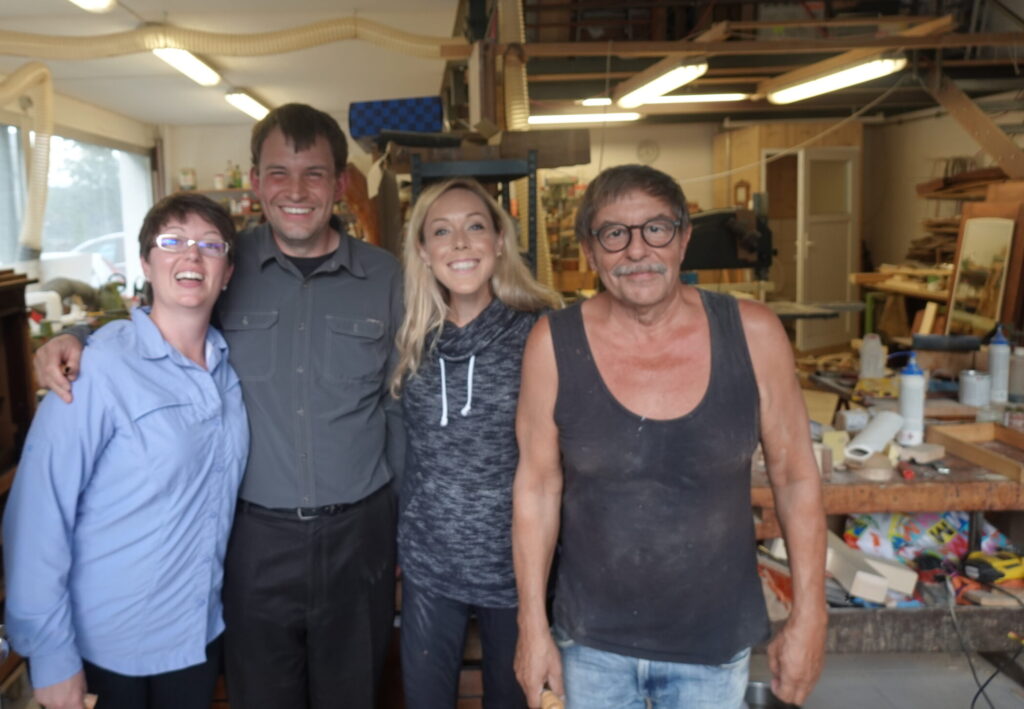
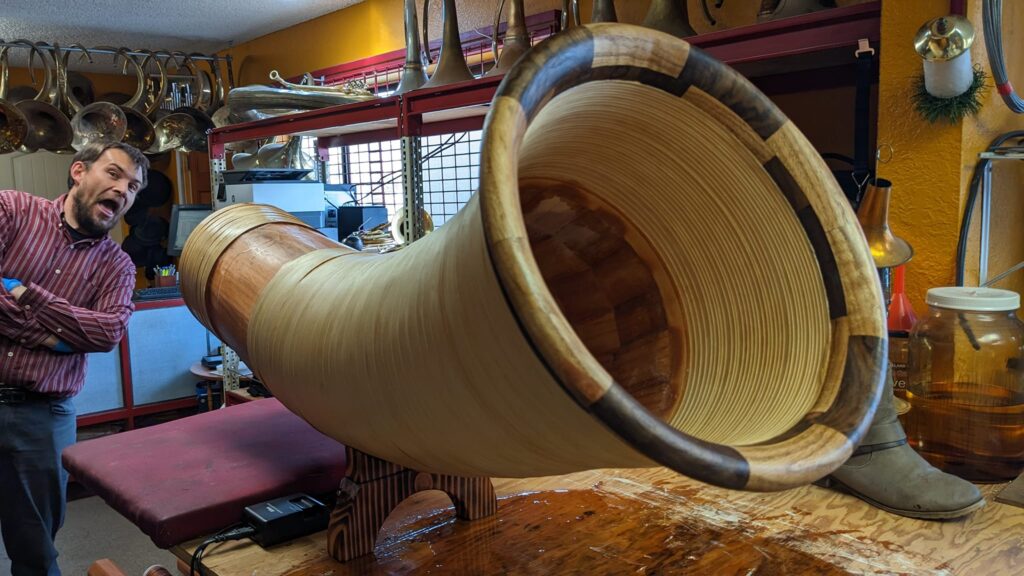

Brandi and Lindsey attended the 2023 Festival of Nendaz and along the way attended the workshop with Natalie Grana at Bannalp. For this trip, their instruments had to meet a special set of requirements: Both horns had to fit into a normal case (therefore they installed additional bushings and put Brandi’s horn into Lindsey’s horn), they had to do without carbon because of the regulations in Nendaz (therefore Brandi’s horn had a hickory core) and they had to survive the flight without a hard shell (therefore Lindsey installed extra-heavy bushings in his horn). Despite all these compromises, I was able to observe up close how good the instruments sounded. Especially in the well-rehearsed duo the instruments intonate and harmonize wonderfully. Lindsey’s horn has a lot of power and reacts very flexibly despite the mass. Even Tobias Bärtschi was strongly impressed by the playability when he visited his fellow alphorn makers. I myself found that the instrument needs relatively much power, but otherwise responds well. Brandi’s horn takes a bit more getting used to; due to the lack of a carbon core and the very narrow scale, it hangs a lot when playing and wobbles with every movement. Nevertheless, Brandi blows a precise, solid and warm bass with it. I assume that the “normal” Silver & Brass horns are of even better musical quality without the mentioned limitations – hopefully the opportunity will arise to try one of their “root horns”!
On the platform alpensong.com you can find an offer of their alphorns. The typical price for a hybrid or redwood horn is about $2,500; delivery terms are negotiable. For more information about Brandi and Lindsey, visit the Sierra Alphorn Players and Silver & Brass websites. Below my impressions of her visit to Hinterburgseeli; below as a bonus the post of the RTS of Nendaz with Brandi in the interview.
Conclusion: Original and surprisingly good sounding alphorns from the land of unlimited possibilities. A refreshing and endearing pair of alphorn builders who go their way light-heartedly and with great expertise.
Bonus: TSR feature from the Festival Interantional de Cor des Alpes in Nendas 2023, including short interview with Brandi.
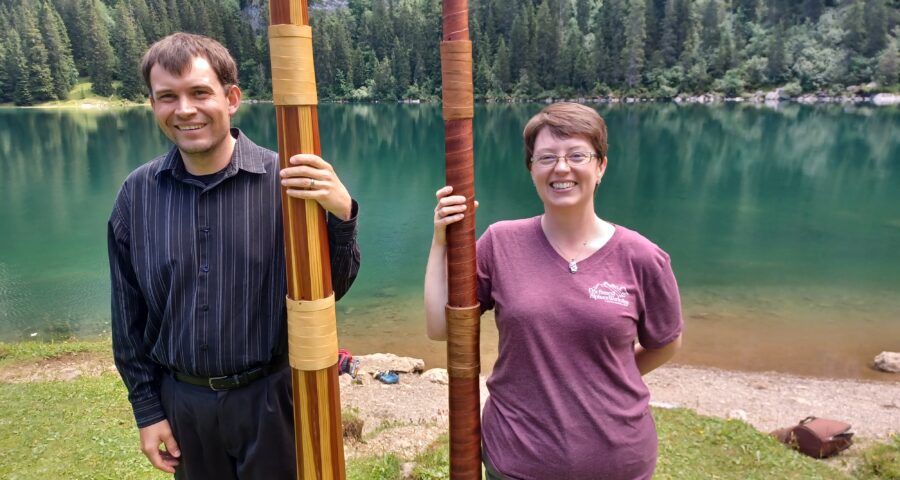
Leave a Reply